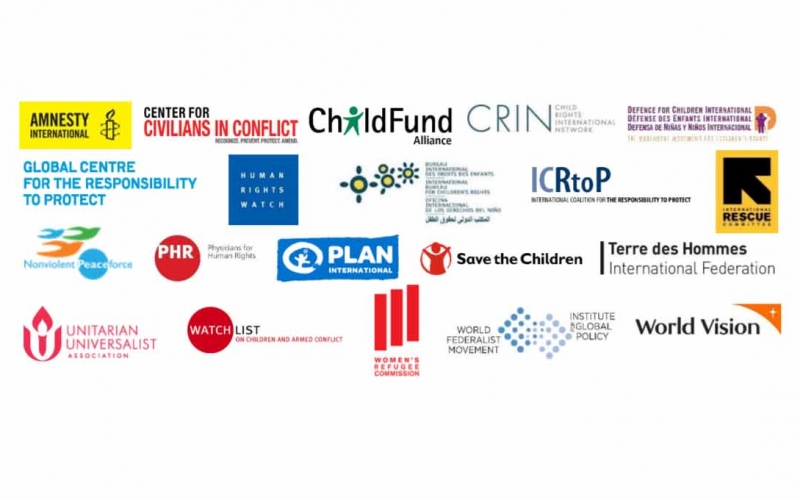Joint NGO letter to UN Secretary-General to publish a complete list of perpetrators of grave violations

Secretary-General António Guterres
United Nations
UN Headquarters, S-3800
New York, NY 10017
May 11, 2020
Re: Upcoming report on children and armed conflict
Dear Mr. Secretary-General,
We, the undersigned organizations, are writing with regard to your forthcoming annual report on children and armed conflict and its annexes. As you finalize your decisions regarding the annexes, we urge you to ensure the publication of a complete list of perpetrators of grave violations that is evidence-based and accurately reflects data collected and verified by the United Nations Monitoring and Reporting Mechanism (MRM).
As a diverse group of non-governmental organizations working on alleviating humanitarian suffering and protecting human rights, we strongly support UN Security Council Resolution 1612 (2005) and subsequent resolutions on children and armed conflict. The MRM, the annual report, and its annex listings are a crucial foundation for the UN’s engagement with parties to conflict, to secure concrete commitments through UN action plans.
These mechanisms have a proven power to influence warring parties’ behavior and promote accountability and compliance with international law. To date, 32 parties to conflict – including 12 government forces and 20 non-state armed groups – have signed action plans to end and prevent violations. Of these, 12 have fully complied with their commitments and been delisted – evidence that the listing mechanism can lead to positive change for children in armed conflict.
In recent years, we have noted with concern the exclusion of a number of parties to conflict from the annexes, despite patterns of violations rigorously verified by UN country teams and detailed in the narrative of the report. For example, in 2018, 286 children were killed or maimed by international forces in Afghanistan – a nearly threefold increase from 2017 – yet these forces were not listed in last year’s report annexes.
In a similar vein, we urge you to avoid prematurely delisting parties that continue to violate children’s rights in conflict, which undermines the power of the listing mechanism to effect changes in behavior. The 2010 annual report on children and armed conflict (A/64/742-S/2010/181, paras. 178-179) identifies the signing and timely implementation of action plans as the formal and only path for delisting. Furthermore, the same report specifies that a party will be delisted “on condition that there is UN-verified information that it has ceased commission of all the said grave violations against children for which the party is listed […] for a period of at least one reporting cycle” (A/64/742-S/2010/181, para. 178). Yet in 2018, the Saudi- and Emirati-led coalition was delisted for attacks on schools and hospitals in Yemen, despite having been responsible for 24 out of 31, or 77 percent, of all such attacks recorded by the UN in 2017. In 2018, the UN attributed 15 attacks on schools and hospitals to the coalition – the same number attributed to the Houthis, who remained listed, that year.
Furthermore, for the past three years, the annexes of your report have split listings for violations against children into two sections – A and B. As in the previous years, your 2019 report stated that “the annexes distinguish between listed parties that have put in place measures aimed at improving the protection of children during the reporting period [Section B] and parties that have not [Section A],” (A/73/907- S/2019/509, para. 4) – yet clear and transparent criteria explaining what constitute sufficient measures have not been provided. Last year, parties were included in Section B, despite an increase in violations as compared with the previous year. For example, the Somali National Army was responsible for 113 child casualties in 2018, an increase from 88 in 2017, and 155 cases of child recruitment, up from 119 in 2017 – yet it appeared in Section B for both violations. We continue to advise against making such distinctions, and instead urge you to identify, unequivocally condemn, and name those parties to conflict that have committed grave violations against children in a single list.
We believe that an evidence-based approach is vital to upholding the integrity of the listing mechanism and is central to avoiding any sort of politicization of the list, which would inevitably damage its credibility and weaken its impact in protecting children in conflict. All perpetrators of grave violations must be held to the same standard regardless of whether they are government security forces, international coalitions, regional forces, non-state armed groups, or even UN peacekeepers. As you finalize this year’s report and make your decisions regarding listings, we urge you to take into account the recommendations made by the Watchlist on Children and Armed Conflict and its April 20 “Credible List” policy brief.
We look forward to the publication of your annual report and reaffirm our call for a complete and accurate list of perpetrators of grave violations against children.
Yours sincerely,
1. Amnesty International
2. Center for Civilians in Conflict
3. ChildFund Alliance
4. Child Rights International Network
5. Defence for Children International
6. Global Centre for the Responsibility to Protect
7. Human Rights Watch
8. International Bureau for Children’s Rights
9. International Coalition for the Responsibility to Protect
10. International Rescue Committee
11. Nonviolent Peaceforce
12. Physicians for Human Rights
13. Plan International
14. Save the Children
15. Terre des Hommes International Federation
16. Unitarian Universalist Association
17. Watchlist on Children and Armed Conflict
18. Women’s Refugee Commission
19. World Federalist Movement – Institute for Global Policy
20. World Vision International
Cc: Ms. Virginia Gamba, Special Representative of the Secretary-General for Children and Armed Conflict
